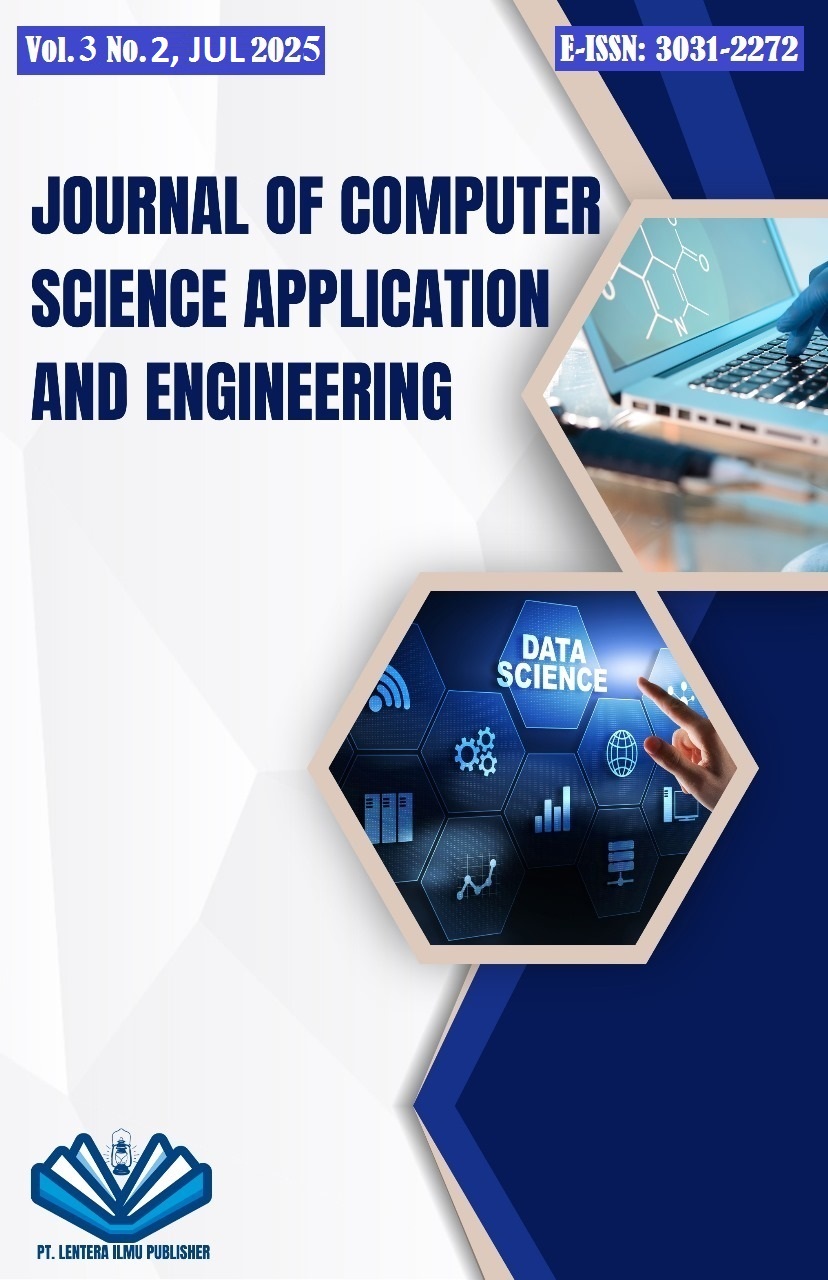Web-Based Monitoring and Management System for Livestock Operations
DOI:
https://doi.org/10.70356/josapen.v3i2.69Keywords:
Livestock Monitoring, Web-Based System, Agile DevelopmentAbstract
Monitoring livestock health and productivity is a critical aspect of agricultural management, yet many organizations still rely on manual or disconnected systems that lead to inefficiencies, delayed reporting, and lack of real-time insight. These challenges hinder timely decision-making, especially in identifying diseases, recording births and deaths, and maintaining accurate data. To address this gap, this study introduces a Web-Based Livestock Monitoring System designed to streamline data entry, enable centralized access, and support role-based interaction for Admins, Livestock Staff, and the Head of Department. The system was developed using a structured web application model, with core features including user authentication, livestock categorization, health monitoring, and monthly report generation. A black-box testing approach was used to evaluate its functionality from the user's perspective without delving into internal code logic. Testing results showed that all features—such as login validation, data input, and report generation—operated successfully and provided the expected outputs. This system offers a practical solution for modernizing livestock monitoring processes, enhancing efficiency, data accuracy, and communication across roles. It contributes to more effective livestock management by ensuring that health data is up-to-date and accessible, allowing stakeholders to make informed decisions and respond proactively to issues in the field.
Downloads
References
G. Papadopoulos et al., “Economic and environmental benefits of digital agricultural technological solutions in livestock farming: A review,” Smart Agric. Technol., vol. 10, no. January, p. 100783, 2025, doi: https://doi.org/10.1016/j.atech.2025.100783.
H. Görge, I. Dittrich, N. Kemper, and J. Krieter, “Solutions and prospects for digital documentation of treatment data on-farm,” Smart Agric. Technol., vol. 5, no. August, 2023, doi: https://doi.org/10.1016/j.atech.2023.100299.
A. Shahbaz, W. Zhang, and M. Smith, “A novel system for automated continuous on-farm assessment of digital dermatitis using artificial intelligence,” Smart Agric. Technol., vol. 12, no. July, p. 101178, 2025, doi: https://doi.org/10.1016/j.atech.2025.101178.
M. A. Al-ghouti, M. Khan, M. S. Nasser, K. Al Saad, and O. O. N. E. Heng, “Jo ur na l P re of,” J. Clean. Prod., p. 125039, 2020, doi: https://doi.org/10.1016/j.csag.2025.100069.
T. Ohashi, M. Saijo, K. Suzuki, and S. Arafuka, “From conservatism to innovation: The sequential and iterative process of smart livestock technology adoption in Japanese small-farm systems,” Technol. Forecast. Soc. Change, vol. 208, no. June, p. 123692, 2024, doi: https://doi.org/10.1016/j.techfore.2024.123692.
K. D. Prasetya, Suharjito, and D. Pratama, “Effectiveness Analysis of Distributed Scrum Model Compared to Waterfall approach in Third-Party Application Development,” Procedia Comput. Sci., vol. 179, no. 2019, pp. 103–111, 2021, doi: https://doi.org/10.1016/j.procs.2020.12.014.
T. Thesing, C. Feldmann, and M. Burchardt, “Agile versus Waterfall Project Management: Decision model for selecting the appropriate approach to a project,” Procedia Comput. Sci., vol. 181, pp. 746–756, 2021, doi: https://doi.org/10.1016/j.procs.2021.01.227.
A. A. S. Gunawan, B. Clemons, I. F. Halim, K. Anderson, and M. P. Adianti, “Development of e-butler: Introduction of robot system in hospitality with mobile application,” Procedia Comput. Sci., vol. 216, no. 2019, pp. 67–76, 2022, doi: https://doi.org/10.1016/j.procs.2022.12.112.
R. Dwivedi, S. Nerur, and V. Balijepally, “Exploring artificial intelligence and big data scholarship in information systems: A citation, bibliographic coupling, and co-word analysis,” Int. J. Inf. Manag. Data Insights, vol. 3, no. 2, 2023, doi: https://doi.org/10.1016/j.jjimei.2023.100185.
D. Ding et al., “Data collection and information security analysis in sports teaching system based on intelligent sensor,” Meas. Sensors, vol. 28, no. June, 2023, doi: https://doi.org/10.1016/j.measen.2023.100854.
S. Park, J. yoon Lee, and J. Lee, “AI system architecture design methodology based on IMO (Input-AI Model-Output) structure for successful AI adoption in organizations,” Data Knowl. Eng., vol. 150, no. September 2023, 2024, doi: https://doi.org/10.1016/j.datak.2023.102264.
W. Lu et al., “Design for the Emergency Command Information System Architecture of Ocean Oil Spill,” Aquat. Procedia, vol. 3, no. 22, pp. 41–49, 2015, doi: https://doi.org/10.1016/j.aqpro.2015.02.226.
G. A. Attwell, K. E. Bennin, and B. Tekinerdogan, “Reference architecture design for computer-based speech therapy systems,” Comput. Speech Lang., vol. 78, no. August 2022, p. 101465, 2023, doi: https://doi.org/10.1016/j.csl.2022.101465.
N. A. Bhaskaran and M. Durairaj, “Highlighting bugs in software development codes using SDPET for enhancing security,” Meas. Sensors, vol. 30, no. October, p. 100930, 2023, doi: https://doi.org/10.1016/j.measen.2023.100930.
P. Krawiec, R. Janowski, J. Mongay Batalla, E. Andrukiewicz, W. Latoszek, and C. X. Mavromoustakis, “On providing multi-level security assurance based on Common Criteria for O-RAN mobile network equipment. A test case: O-RAN Distributed Unit,” Comput. Secur., vol. 150, no. July 2024, 2025, doi: https://doi.org/10.1016/j.cose.2024.104271.
Downloads
Published
How to Cite
Issue
Section
License
Copyright (c) 2025 Ananda Ade Firdaus

This work is licensed under a Creative Commons Attribution-ShareAlike 4.0 International License.










